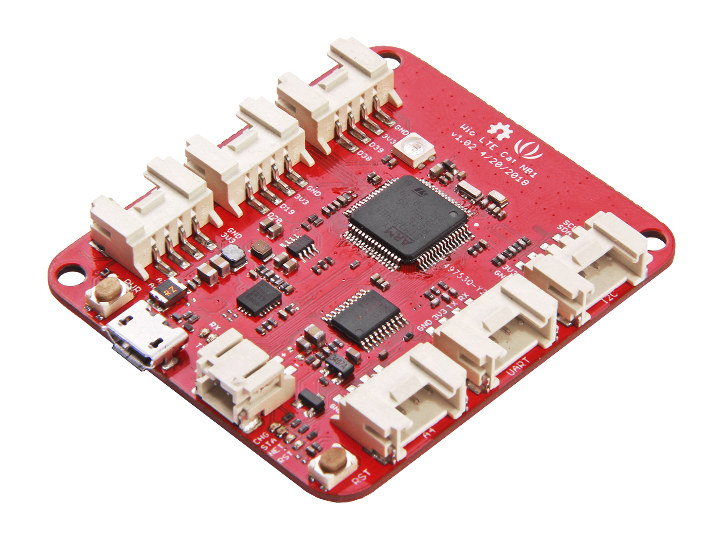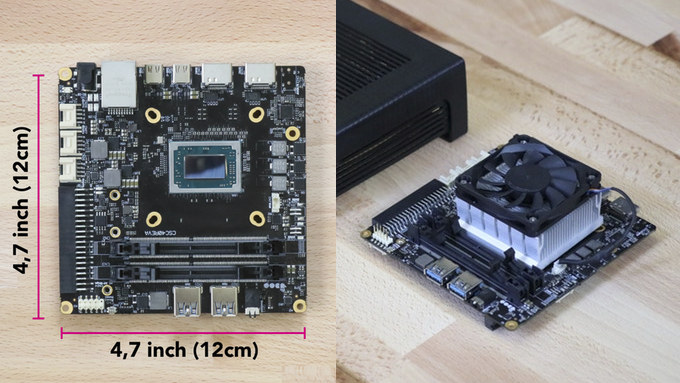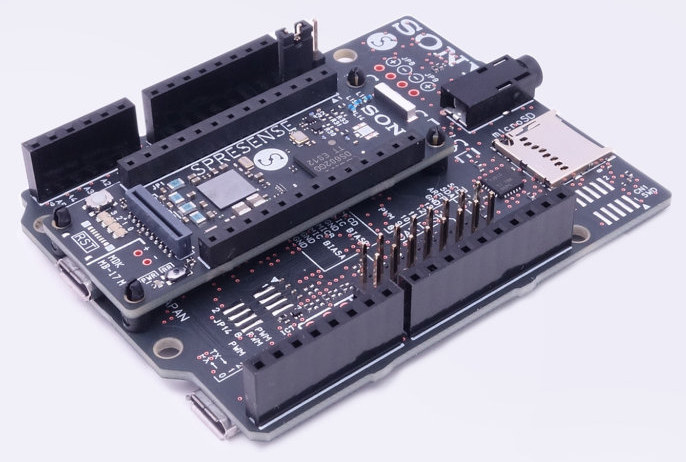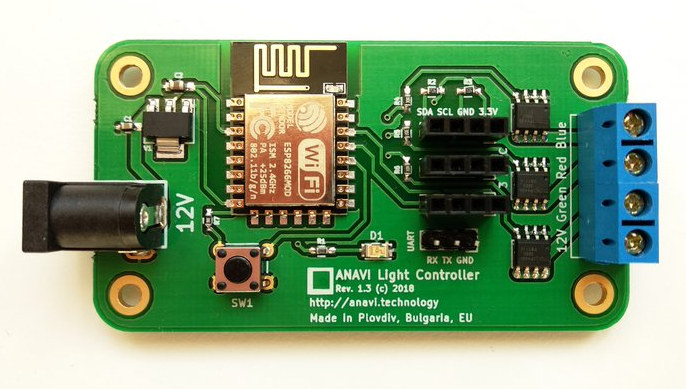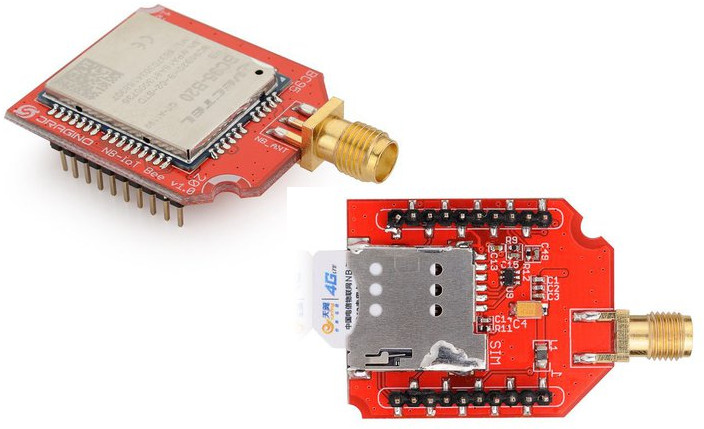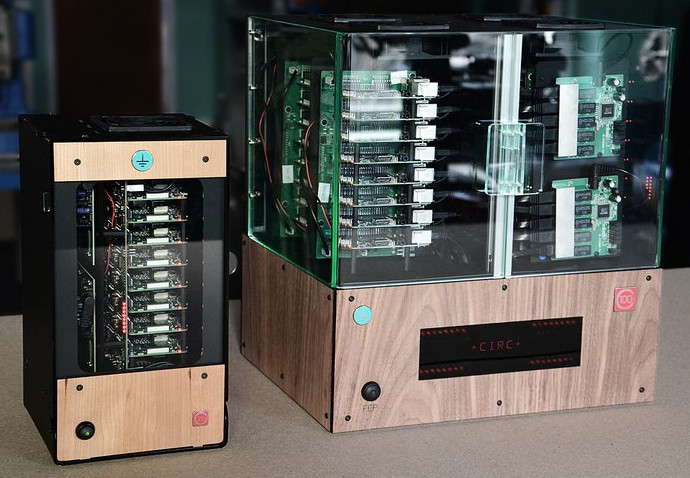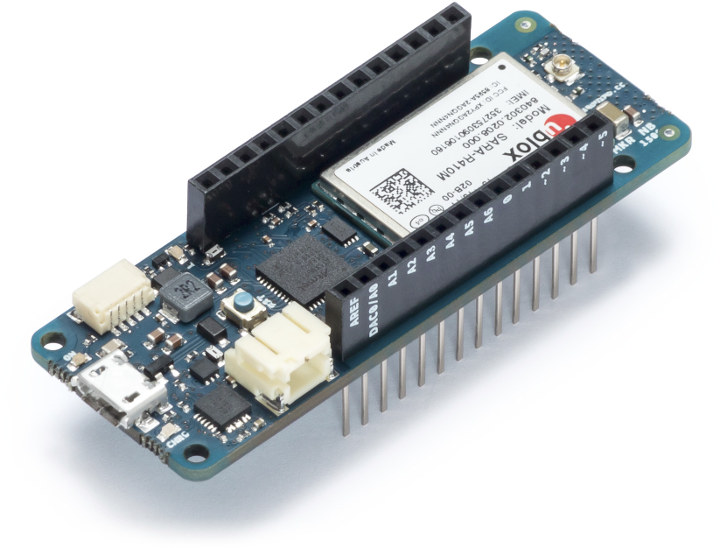Seeed Studio launched a family of GPS tracker boards staring with Wio GPS with 2G cellular connectivity, followed by Wio LTE board offering 4G connectivity several months later. The company is taking pre-order for an LTE Cat M1/NB1 version with NB-IoT / eMTC connectivity, and going for $59 plus shipping. The board is expected to start shipping on July 25th. Wio LTE Cat M1/NB1 board specifications: MCU – STMicro STM32F405RG Arm Cortex-M4 @ 168MHZ with 1M Flash, 192+4KB RAM Connectivity LTE uBlox SARA-R410M module LTE CAT M1 and NB-IoT Cat M1 Half-duplex (375 kb/s DL and UL) Cat NB1 Half-duplex (27.2 kb/s DL, 62.5 UL) Nano SIM and micro SD card 2-in-1 socket GNSS uBlox MAX-M8Q module PS, BeiDou, GLONASS, and Galileo 2.5m CEP(GPS), 4.0m CEP(GLONASS) USB – 1x micro USB port for power supply and DFU Expansions – Grove headers: 2x digital, 2x analog, 1x UART, 1x I2C Misc […]
UDOO BOLT AMD Ryzen Embedded V1000 SBC Goes for $229 and Up (Crowdfunding)
While Intel has been outing low cost and low power processors with less than 10W TDP over the years with their Bay Trail, Cherry Trail, Braswell, Apollo Lake, and now Gemini Lake processors, AMD has not really ventured into the low power space, and the latest announcements about 10-12W processors was for their Embedded G-Series J Family, which I have not seen in many products. More recently, the company introduced Ryzen Embedded V1000 family of processors with 4 to 8 Zen cores, 4K support, 10 GbE interface, and more with a TDP of 12 to 25W for Ryzen Embedded V1202B & V1605B dual / quad core processors. The latest x86 UDOO board – dubbed UDOO BOLT – will be one of the rare AMD development boards available on the market with pricing starting at $229. Two versions of the board will be available: UDOO BOLT v3 with Ryzen Embedded V1202B, […]
Sony SPRESENSE Arduino Compatible GNSS + Audio IoT Board To Sell for $50 (in Japan)
Last year, we covered Sony Spritzer, an Arduino compatible with a Sony hexa-core Arm Cortex-M4F micro-controller, a built-in GNSS receiver, and an audio codec. The product page for this product is now gone, but it appears Sony only renamed it to SPRESENSE, made some design modifications, and is ready to launch the main board for 5,500 JPY (~$50), and the extension board for an extra 3,500 JPY ($32) on July 31, 2018. Sony SPRESENSE main board (CXD5602PWBMAIN1) specifications: MCU – Sony CXD5602 ARM Cortex-M4F ×6 micro-controller clocked at up to 156 MHz with 1.5MB SRAM Storage – 8MB Flash Memory GNSS – GPS & GLONASS Audio – 3.5mm audio jack Expansion I/Os Digital I/O Pins – GPIO, SPI, I2C, UART, PWM, I2S Analog Pins – 2ch (0.7V range) Camera interface USB – 1x micro USB port for programming and power Power Supply – 5V via micro USB port Dimensions – […]
ESP8266 based ANAVI Light Controller can be Programmed with Home Assistant or the Arduino IDE (Crowdfunding)
ANAVI Technology previously launched a Light pHAT allowing for RGB Light strip connection to Raspberry Pi boards, and during my review of ANAVI Light pHAT with Raspberry Pi 2, it did the job, but if that’s all you want to do, the Raspberry Pi board is clearly oversized & overpowered for the job. So Leon ANAVI got back to the drawing board and designed a similar open source hardware board – called ANAVI Light Controller – with an built-in ESP8266 module that removes the need for a fully fledged Linux board. ANAVI Light Controller specifications: Wireless Module – ESP8266MOD module based on ESP8266 Tensilica L106 32-bit processor Connectivity – WiFi 802.11 b/g/n Expansion Terminal block for 12 V RGB LED strip 3x I2C headers for sensors Debugging – UART header Misc – Button Power Supply – 12 V via power barrel jack Dimensions – 75 mm x 40 mm Certification […]
Dragino NB-IoT Bee is a $23 Xbee Compatible NB-IoT Add-on Board
Several companies are already offering XBee NB-IoT add-on board including Digi International themselves, and SODAQ with their NB-IoT Bee N211 module going for 69 Euros. Dragino NB-IoT Bee is another option for NB-IoT connectivity using Xbee form factor, and the board should be cheaper than most as it goes for $23.00 on Tindie with an external antenna. NB-IoT Bee specifications: NB-IoT module Quectel BC95-B5 for B5:850Mhz, B8:900Mhz, or B20:800Mhz in respectively Nb-IoT Bee QB05, QB08, QB20 models (i.e. one frequency is supported by model) Quectel BG96 for LTE Cat M1 & Cat NB1 & EGPRS in Nb-IoT Bee QG96 model Output Powe – 23dBm Sensitivity – -129dBm Micro SIM Slot Input voltage – 4.5v ~ 5.5V Temperature Range – -40°C ~ +85°C Typical applications for such board include smart metering, facility management services, security & fire alarms, asset tracking, smart city infrastructure and so on. If you are looking specifically […]
Circumference Datacentre-in-a-Box Features up to 32 Raspberry Pi 3 B+ Managed by a UDOO x86 Ultra Board (Crowdfunding)
We’ve previously seen several clusters made of Raspberry Pi boards with a 16 RPi Zero cluster prototype, or BitScope Blade with 40 Raspberry Pi boards. The latter now even offers solutions for up to 1,000 nodes in a 42U rack. Circumference offers an other option with either 8 or 32 Raspberry Pi 3 (B+) boards managed by UDOO x86 board acting as a dedicated front-end processor (FEP) that’s designed as a “Datacenter-in-a-Box”. Key features and specifications: Compute nodes – 8x or 32x Raspberry Pi 3 B+ boards for a total of 128x 64-bit 1.4 GHz cores max Backplane MCU – Microchip ATmega1280 8-bit AVR microcontroller Serial Comms – FTDI FT4232 quad-USB UART Switched Mode Power Supply Units (SMPSUs): 8x / 32x software controlled (one per compute node) 1x / 4x always-on (microcontroller) HW monitoring: 8x / 32x compute node energy 2x / 8x supply voltage 2x / 8x temperature Remote […]
Arduino Unveils its First FPGA Board with MKR Vidor 4000, Updates UNO WiFi Board with ATmega4809 MCU
Arduino has been busy with new boards announcements in the last week, as after introducing MKR WiFi 1010 and MKR NB 1500 IoT boards with respectively WiFi + Bluetooth, and NB-IoT + eMTC connectivity, the company has now unveiled two new boards. MKR Vidor 4000 is the very first official Arduino board with an FPGA, while UNO WiFi Rev2 is an upgrade of UNO WiFi board featuring the new Microchip ATmega4809 MCU and an U-blox wireless module instead of an ESP8266 chip. MKR Vidor 4000 Preliminary specifications: FPGA part FPGA – Intel Cyclone FPGA with 16K Logic Elements, 504Kbit of embedded RAM and 56 18×18 bit HW multipliers for high-speed DSP System Memory – 8 MB SDRAM Storage – 2 MB QSPI Flash (1MB for user applications) Micro HDMI connector MIPI camera connector mini PCIe connector with up to 25 user programmable pins MCU – Microchip SAMD21 Cortex-M0+ 32bit low […]
Arduino Introduces Two New IoT Boards – MKR WiFi 1010 (ESP32) and MKR NB 1500 (NB-IoT + eMTC)
Arduino introduced its MKR family of breadboard compatible maker boards with MKR1000 featuring an Atmel SAMD21 microcontroller combined with a Microchip WINC1500 WiFi module. The board was followed by MRKZero without wireless connectivity, then MKRFOX1200 Sigfox board, and finally MKR WAN 1300 & MKR GSM 1400 boards at the end of 2017 with LoRaWAN and 3.75G cellular connectivity. The company has now launched two new boards: Espressif ESP32 based MKR WiFi 1010 with WiFi and Bluetooth, and MKR NB 1500 equipped with an NB-IoT & LTE CAT M1 module. Arduino MKR WiFi 1010 MKR WIFI 1010 is an evolution of the MKR1000 board, and is equipped with a U-Blox ESP32 module. Preliminary specifications: MCU – Microchip SAMD21 Cortex-M0+ MCU @ 48 MHz with 32KB SRAM, 256 KB flash memory Wireless Connectivity – 2.4 GHz 802.11 b/g/n WiFi and Bluetooth 4.2 LE via U-blox NINA-W10 Series module based on ESP32 processor. […]


